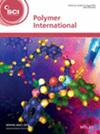求助PDF
{"title":"It's not just a phase: shaping the future of 3D photoprinted polymers with polymerization-induced phase separation","authors":"Rebecca M Johnson, Ronald A Smaldone","doi":"10.1002/pi.6713","DOIUrl":null,"url":null,"abstract":"<p>Additive manufacturing is a technology that promises to disrupt the conventional manufacturing industry due to its ability to create complex structures with improved macroscopic control not available with existing techniques like molding or milling. In addition to superior macroscopic structural control, photoprinting methods such as digital light projection can enable molecular-scale control over the fabrication process by taking advantage of the self-sorting or assembly properties of the monomers themselves. Polymerization-induced phase separation (PIPS) allows for the remarkable introduction of microscopic control into additive manufacturing, using polymer-rich and polymer-poor regions that rely on incompatibilities to phase separate during polymerization creating new complex materials not achieved by traditional methods. With the incorporation of porogens or filler materials, microporosity and/or surface functionalization can be introduced in a facile one-step printing process. This expands the potential applications of 3D printed materials, to include micro- and macroscale structural control. Using PIPS as a design strategy, polymeric materials with previously unprecedented capabilities can be produced with ease enabling 3D printing to grow into its full potential as a manufacturing tool. © 2024 Society of Chemical Industry.</p>","PeriodicalId":20404,"journal":{"name":"Polymer International","volume":"74 4","pages":"291-295"},"PeriodicalIF":3.6000,"publicationDate":"2024-10-29","publicationTypes":"Journal Article","fieldsOfStudy":null,"isOpenAccess":false,"openAccessPdf":"","citationCount":"0","resultStr":null,"platform":"Semanticscholar","paperid":null,"PeriodicalName":"Polymer International","FirstCategoryId":"92","ListUrlMain":"https://scijournals.onlinelibrary.wiley.com/doi/10.1002/pi.6713","RegionNum":4,"RegionCategory":"化学","ArticlePicture":[],"TitleCN":null,"AbstractTextCN":null,"PMCID":null,"EPubDate":"","PubModel":"","JCR":"Q2","JCRName":"POLYMER SCIENCE","Score":null,"Total":0}
引用次数: 0
引用
批量引用
Abstract
Additive manufacturing is a technology that promises to disrupt the conventional manufacturing industry due to its ability to create complex structures with improved macroscopic control not available with existing techniques like molding or milling. In addition to superior macroscopic structural control, photoprinting methods such as digital light projection can enable molecular-scale control over the fabrication process by taking advantage of the self-sorting or assembly properties of the monomers themselves. Polymerization-induced phase separation (PIPS) allows for the remarkable introduction of microscopic control into additive manufacturing, using polymer-rich and polymer-poor regions that rely on incompatibilities to phase separate during polymerization creating new complex materials not achieved by traditional methods. With the incorporation of porogens or filler materials, microporosity and/or surface functionalization can be introduced in a facile one-step printing process. This expands the potential applications of 3D printed materials, to include micro- and macroscale structural control. Using PIPS as a design strategy, polymeric materials with previously unprecedented capabilities can be produced with ease enabling 3D printing to grow into its full potential as a manufacturing tool. © 2024 Society of Chemical Industry.
这不仅仅是一个阶段:通过聚合诱导相分离来塑造3D光打印聚合物的未来
增材制造是一项有望颠覆传统制造业的技术,因为它能够创造复杂的结构,并改善宏观控制,这是现有技术(如成型或铣削)无法实现的。除了优越的宏观结构控制外,光印刷方法,如数字光投影,可以利用单体本身的自分类或组装特性,实现对制造过程的分子尺度控制。聚合诱导相分离(PIPS)将微观控制引入到增材制造中,利用聚合过程中依赖不相容的富聚合物和贫聚合物区域进行相分离,创造出传统方法无法实现的新型复杂材料。随着孔隙素或填充材料的掺入,微孔隙和/或表面功能化可以在一个简单的一步印刷过程中引入。这扩大了3D打印材料的潜在应用,包括微观和宏观尺度的结构控制。使用PIPS作为设计策略,可以轻松生产具有前所未有性能的聚合物材料,使3D打印能够充分发挥其作为制造工具的潜力。©2024化学工业学会。
本文章由计算机程序翻译,如有差异,请以英文原文为准。





 求助内容:
求助内容: 应助结果提醒方式:
应助结果提醒方式:


